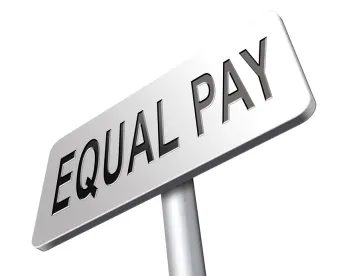As federal agencies step up the enforcement of immigration compliance by employers, employers should review their documentation of intent or audit files. In particular, employers should review the H-1B actual wage documentation in their H-1B public access files.
U.S. Labor Department (USDOL) regulations affecting the employment of H-1B nonimmigrants require an employer explicitly to document that the H-1B employee is not paid less than American workers in the same position at the employer’s worksite. The pay plus benefits for the employer’s American workers in the same position is called the “actual wage” for the position.
USDOL suggests that an employer write a memorandum to the public access file summarizing the employer’s pay system or scale for the subject position. The purpose of this memo is to document: 1) that the employer is paying the H-1B worker no less than American employees in the same position; 2) that the employer is offering benefits to the H-1B worker on the same basis and under the same criteria as the benefits the employer provides to similarly employed U.S. workers; and 3) that the employer will pay for non-productive time caused by the employer or by the H-1B worker’s lack of a license or permit (e.g., time spent studying for a licensing exam or lack of work assignments). In preparing this memo, keep in mind that benefits include: health, life, disability, and other insurance plans; retirement and savings plans; cash bonuses; and non-cash compensation such as stock options (whether or not they are performance-based). USDOL does not require copies of payroll records in this file.
Your memo should state how the H-1B employee’s salary compares to the salary of similarly employed workers at your company, and the variables that determine differences, if any, between the H-1B employee’s salary and similarly employed workers’ salaries. In USDOL’s view, a differential in actual wage or a reduction in prevailing wage caused by immigration legal fees paid by the H-1B employee is not permissible. In other words, the H-1B employee’s salary should be higher than similarly employed American workers to offset the legal fees, if any, paid by the H-1B employee to obtain the H-1B visa. Regarding benefits offered to the H-1B worker, the memo should list and describe the benefits offered to the H-1B worker and how those benefits compare to the benefits offered to similarly employed U.S. workers. The criteria used to determine which benefits are offered to the H-1B worker and which to similarly employed U.S. workers should be the same.
If your H-1B employee is employed in a unique position in your company, a memo to the file stating this should suffice, as long as you explain why the alien’s position is unique. If you have employees who perform the same specific employment as the H-1B employee at the same specific place of employment as the H-1B employee, you must include the wage rate(s) for all these employees in the memorandum.
USDOL’s H-1B actual wage requirements do not create new regulatory obligations for employers with respect to payroll records. Remember that payroll records must be kept for three years and must include certain information. USDOL may request these records for litigation purposes.



 />i
/>i

